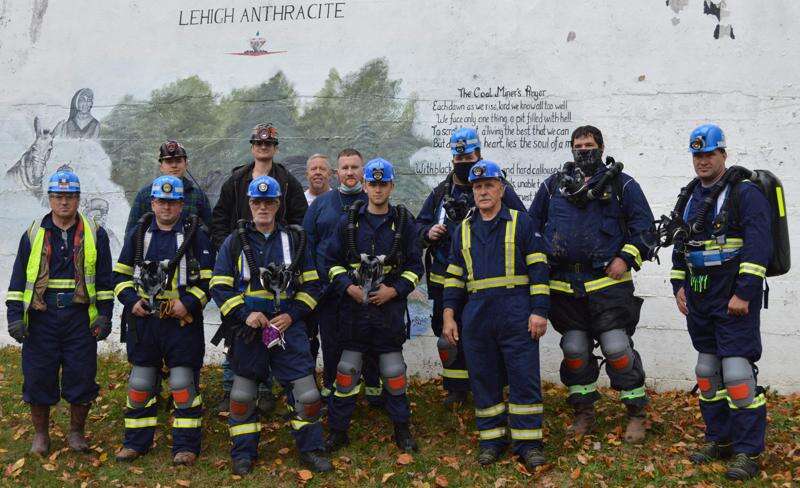Spotlight: Mine Rescue Teams Provide Medical Resources in Times of Crisis

By Chris Reber
November 15, 2020 - In mine rescues, the timing of medical care is critical. The mining division of the Special Medical Response Team exists to enhance the medical resources available to mine rescue teams.
“We bring the advanced life support underground because of the duration it may take to bring that person to the topside,” said Chris Anderson, president of Special Medical Response Team.
SMRT’s mining division includes medical professionals who provide support to mine rescue teams during rescues.
The No. 9 mine provides the team with a place to train which is as close to the real thing as they can get without disrupting active mine operations.
“It’s something they would do every day, but not with this machine on their back, and mask on their face,” said Rod Shabbick, who heads the mining division of Special Medical Response Team.
Coming from the soft coal of Western Pennsylvania, they get to experience the difficult conditions faced by the old anthracite deep miners, who had to mine along narrow vertical seams, as opposed to the flat environment in bituminous coal mines.

Members of the Special Medical Response Team's mining division
Photo: Chris Reber, Times News
.jpg)
SMRT members conduct medical training inside the No. 9 Mine
“They’re a different breed and they have to be. Mine rescue principles are mine rescue principles, but their environment is totally different,” Shabbick said.
During their recent visits to the mine, the team trained in the early morning so they did not interfere with the mine’s tour schedule. After they wrapped up, they received an official tour of the oldest continuously operated anthracite mine in the world.
SMRT is a group of volunteers who have been providing mine medical rescue services since 1984. They include doctors, physician assistants, nurses, medics and EMTs.
The mining division is not the only aspect of SMRT. They also provide medical support for law enforcement and search and rescue during a variety of situations. The mine rescue team’s training involves teaching them to use those skills in the unusual underground environment.
No. 9 Mine and Museum President Zachary Petroski said that the mine is happy to help the team keep up with the necessary training and help those working in active mines, both anthracite and bituminous.
“It’s a dangerous job and you have to have first responders that are specialized for these instances, and they need to keep up their training just like any other EMT or paramedic,” Petroski said.
They must complete the Mine Safety and Health Administration’s new miner training, training to use portable breathing apparatus, and annual refresher courses.
The main purpose of training inside the No. 9 mine is to familiarize them with the Drager BG 4 portable breathing apparatus.
“We wanted to see how they can visualize with the mask. It’s like scuba diving. You have to turn your head and look down,” Shabbick said.
They also did some basic tasks like medical training and fire control, just to see how the equipment would affect their performance.
“My job is not to make miners out of them, but to give them enough education that they can be safe for themselves in an underground environment, not endanger anyone else, and most importantly protect their ability to breathe and get out of the place,” Shabbick said.

